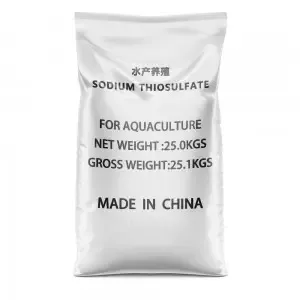



Chlorine Dioxide Solutions for Effective Water Treatment and Purification Systems
Chlorine Dioxide Water Treatment System An Overview
Water is essential for life, covering around 71% of the Earth's surface. However, ensuring that this vital resource is safe and clean for consumption is a significant challenge. Water treatment systems are crucial in this regard, and one increasingly popular method is using chlorine dioxide. This article explores the principles, advantages, and applications of chlorine dioxide water treatment systems.
Understanding Chlorine Dioxide
Chlorine dioxide (ClO2) is a yellow-green gas with a distinctive odor, known for its powerful disinfecting properties. It is often used as a biocide and oxidizer, capable of effectively killing bacteria, viruses, and other pathogens in water. Unlike traditional chlorine, chlorine dioxide does not form harmful by-products such as trihalomethanes (THMs) when reacting with organic matter, making it a safer alternative.
How Chlorine Dioxide Works in Water Treatment
The process of chlorine dioxide water treatment typically involves the generation of the gas from pre-existing sodium chlorite (NaClO2) mixed with an acid. This combination generates chlorine dioxide, which can then be infused into the water supply. The gas dissolves in the water, where it dissociates into chlorite and chloride ions, effectively eliminating microorganisms.
The disinfection process involves several stages
1. Pre-treatment This stage prepares the water by removing larger particles and organic matter, ensuring that chlorine dioxide can act effectively. 2. Chlorine Dioxide Injection The generated ClO2 is infused into the water to achieve the desired concentration for disinfection. The concentration can vary based on the quality of raw water and the specific pathogens present.
3. Contact Time The water is held in a retention tank allowing sufficient contact time for chlorine dioxide to act on bacteria, viruses, and other contaminants.
4. Post-treatment After disinfection, the water may undergo carbon filtration or additional treatments to further improve taste and remove any residual chlorine dioxide.
Advantages of Using Chlorine Dioxide in Water Treatment
chlorine dioxide water treatment system

- Effective Disinfection Chlorine dioxide is highly effective against a wide range of pathogens, including bacteria, viruses, and protozoa. Its ability to penetrate biofilms, which are often resistant to other disinfectants, enhances its efficacy.
- Minimal By-product Formation Unlike traditional chlorine disinfection methods, chlorine dioxide does not create harmful by-products, reducing health risks associated with drinking water contamination.
- Broad pH Neutrality Chlorine dioxide maintains its efficacy over a wide pH range, making it suitable for various water sources with differing chemical compositions.
- Taste and Odor Control Chlorine dioxide is less likely to impart undesirable tastes or odors to treated water compared to other chemical disinfectants.
Applications of Chlorine Dioxide Water Treatment Systems
1. Municipal Water Treatment Many cities employ chlorine dioxide as a primary or secondary disinfectant to ensure safe drinking water for their residents.
2. Industrial Water Treatment Industries such as food and beverage, pharmaceuticals, and paper manufacturing use chlorine dioxide systems to manage water quality, cooling systems, and process water.
3. Wastewater Treatment Chlorine dioxide is utilized to disinfect wastewater before it is released back into the environment or treated further for reuse.
4. Legionella Control Chlorine dioxide is effective at controlling Legionella bacteria, making it a vital component in water management plans for hotels, hospitals, and large buildings with complex plumbing systems.
Conclusion
Chlorine dioxide water treatment systems represent a modern solution to the ongoing challenge of providing safe and clean water. With its superior disinfection capabilities, reduced formation of harmful by-products, and versatility across various applications, chlorine dioxide is becoming an increasingly popular choice for water treatment facilities worldwide. As the demand for clean water grows, embracing advanced technologies like chlorine dioxide will be essential in safeguarding public health and ensuring sustainable water management practices.
-
Why Sodium Persulfate Is Everywhere NowNewsJul.07,2025
-
Why Polyacrylamide Is in High DemandNewsJul.07,2025
-
Understanding Paint Chemicals and Their ApplicationsNewsJul.07,2025
-
Smart Use Of Mining ChemicalsNewsJul.07,2025
-
Practical Uses of Potassium MonopersulfateNewsJul.07,2025
-
Agrochemicals In Real FarmingNewsJul.07,2025
-
Sodium Chlorite Hot UsesNewsJul.01,2025










